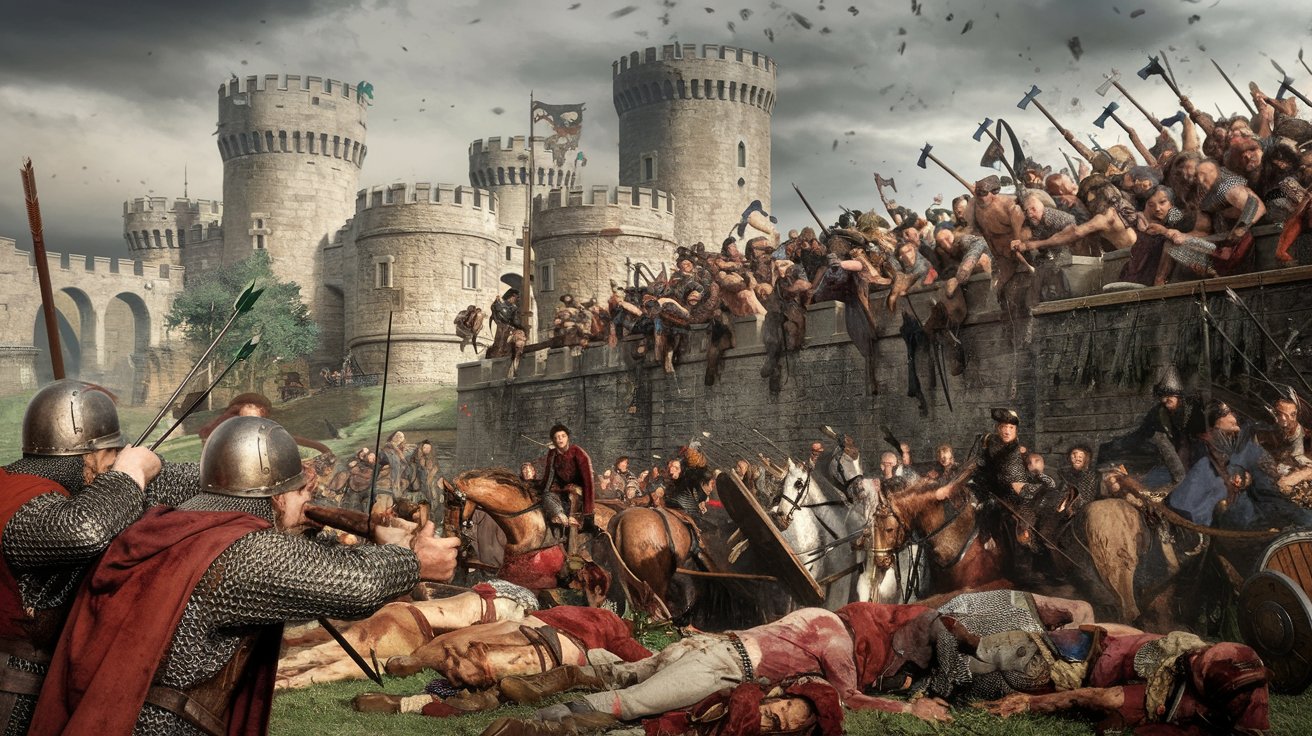
The Battle of Rasil was a pivotal moment in history, shaping the course of events for generations. This clash, fought between two powerful forces, remains a topic of fascination for historians and enthusiasts alike. But what makes this battle so intriguing? From strategic maneuvers to legendary leaders, the Battle of Rasil offers a treasure trove of stories and lessons. Whether you're a history buff or just curious about epic battles, this list of 25 facts will give you a deeper understanding of this monumental event. Get ready to dive into the details of one of history's most captivating battles.
Key Takeaways:
- The Battle of Rasil was a major clash between the Rashidun Caliphate and the Sasanian Empire, shaping the region's history and leading to the eventual Muslim conquest of Persia.
- Khalid ibn al-Walid's innovative tactics and the Rashidun Caliphate's victory at Rasil weakened the Sasanian Empire, marking a turning point in early Islamic conquests.
The Battle of Rasil: A Glimpse into History
The Battle of Rasil is a significant event in history, often overlooked but rich with intriguing details. This battle, fought between the Rashidun Caliphate and the Sasanian Empire, shaped the course of history in the region. Let's dive into some fascinating facts about this historic clash.
Key Players and Forces
Understanding the main participants in the Battle of Rasil provides context to the conflict.
- The Rashidun Caliphate, an Islamic state, was expanding rapidly during the 7th century.
- The Sasanian Empire, a powerful Persian dynasty, was one of the last pre-Islamic Persian empires.
- The battle occurred around 634 AD, during the early Islamic conquests.
- Khalid ibn al-Walid, a prominent military commander, led the Rashidun forces.
- The Sasanian forces were commanded by Hormuzd Jadhuyih, a notable Persian general.
Strategic Importance
The location and timing of the Battle of Rasil were crucial for both empires.
- The battle took place near the Euphrates River, a vital waterway in the region.
- Control over the Euphrates meant dominance over trade routes and resources.
- The Rashidun Caliphate aimed to weaken the Sasanian hold on Mesopotamia.
- The Sasanians sought to defend their territory from the rapidly expanding Islamic state.
- Victory for the Rashidun forces would open the path to further conquests in Persia.
Tactics and Warfare
The strategies employed during the Battle of Rasil highlight the military prowess of both sides.
- Khalid ibn al-Walid was known for his innovative and flexible tactics.
- The Rashidun army utilized mobile cavalry units to outmaneuver the Sasanian forces.
- The Sasanians relied heavily on their heavily armored cataphracts, or cavalry.
- The battle saw the use of traditional Persian war elephants, adding a unique element to the conflict.
- Despite being outnumbered, the Rashidun forces managed to exploit the terrain to their advantage.
Outcome and Consequences
The aftermath of the Battle of Rasil had far-reaching implications for both empires.
- The Rashidun Caliphate emerged victorious, marking a significant milestone in their expansion.
- The defeat weakened the Sasanian Empire, contributing to its eventual downfall.
- The victory boosted the morale of the Rashidun forces, encouraging further conquests.
- The battle demonstrated the effectiveness of Islamic military strategies.
- It paved the way for the eventual Muslim conquest of Persia.
Legacy and Historical Significance
The Battle of Rasil left a lasting legacy that continues to be studied by historians.
- The battle is often cited as a turning point in the early Islamic conquests.
- It showcased the military genius of Khalid ibn al-Walid, earning him the title "Sword of Allah."
- The clash highlighted the decline of the Sasanian Empire, which had been a dominant force for centuries.
- The battle's outcome influenced the political and cultural landscape of the region.
- Today, the Battle of Rasil is remembered as a pivotal moment in the history of the Middle East.
Reflecting on the Battle of Rasil
The Battle of Rasil stands as a pivotal moment in history, shaping the course of events in the region. Understanding its significance helps us appreciate the complex tapestry of past conflicts and alliances. This battle wasn't just about military might; it was about strategy, leadership, and the will to overcome adversity. The lessons learned from this encounter continue to resonate, reminding us of the importance of resilience and tactical acumen. By delving into these facts, we've gained a deeper appreciation for the bravery and ingenuity displayed by those involved. History, after all, is a great teacher, offering insights that remain relevant even today. As we reflect on these events, let's carry forward the wisdom and courage exemplified by the participants of the Battle of Rasil.
Frequently Asked Questions
Was this page helpful?
Our commitment to delivering trustworthy and engaging content is at the heart of what we do. Each fact on our site is contributed by real users like you, bringing a wealth of diverse insights and information. To ensure the highest standards of accuracy and reliability, our dedicated editors meticulously review each submission. This process guarantees that the facts we share are not only fascinating but also credible. Trust in our commitment to quality and authenticity as you explore and learn with us.
